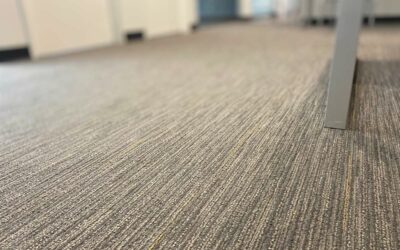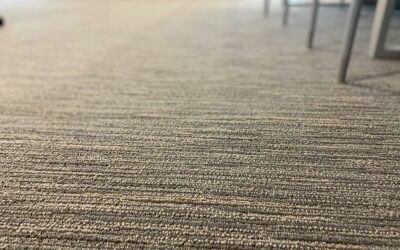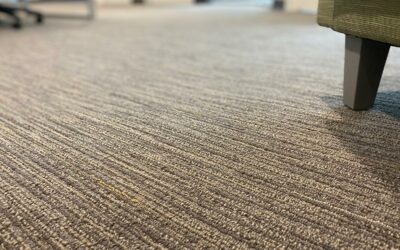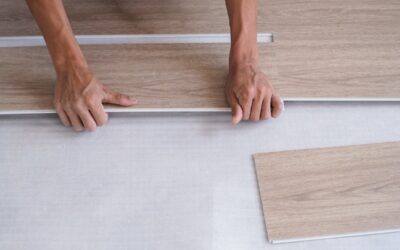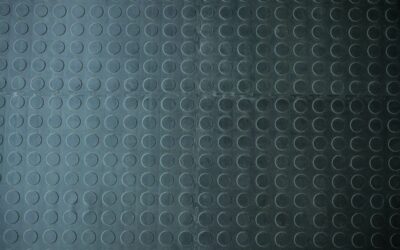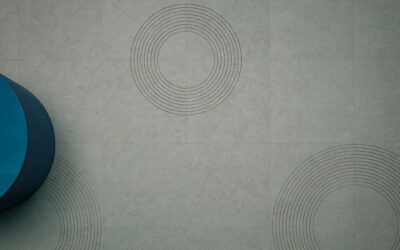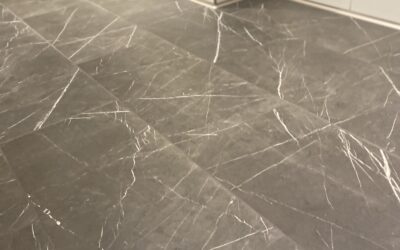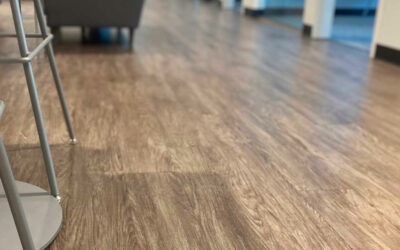What Are Hardwood Floors?
Hardwood Floors
What are hardwood floors? As the name suggests, hardwood floors are a type of flooring made from timber (aka wood). This type of flooring comes in two basic types: solid hardwood floors and engineered hardwood floors. And if you’re reading this, it might mean that you are doing some research for an upcoming flooring project! Keep reading to get the education you’re looking for!
Hardwood floors have consistently been a top flooring choice for customers for decades. They say imitation is the highest form of flattery and considering the many new hardwood-mimicking flooring products on the market now, it’s safe to say that hardwood flooring is an industry leader.
Here at Lakeside Floor Coverings, we are proud to offer different types of wood flooring options to meet your needs. You can also rely on us to bring you the wood flooring education you need to make a wise investment in your house or commercial property!
As you read, you’ll become familiar with different hardwood flooring varieties, the many installation methods, current design trends, as well as maintenance tips to keep your hardwood floors looking great!
Hardwood Flooring Varieties
Many people choose hardwood flooring as their preferred flooring type because it has the ability to bring in the natural beauty of the outdoors while also providing some charming, yet traditional flare to their interior.
When it comes to choosing your preferred hardwood flooring, it’s important to know that there are two basic types which will be explained below.
Solid Hardwood Flooring
We’re sure you’re not surprised to hear that solid hardwood flooring is a type of wood flooring that is made of solid timber. The entire plank is solid wood, from top to bottom. Each timber plank is traditionally ¾ of an inch thick.
It’s very long-lasting – as a matter of fact, if you are hooked on any design shows that flip historic homes, you’ve likely seen the host get quite excited when solid hardwood floors are uncovered during the demo! (Keep scrolling to learn about refinishing hardwood flooring).
Engineered Hardwood Flooring
The other basic type of hardwood flooring is called engineered hardwood flooring. This type of wood flooring includes a high-quality plywood layer which differentiates it from the solid hardwood flooring option. The plywood accounts for the vast majority of the plank with a veneer wood layer on top.
Engineered hardwood looks just like its natural hardwood counterpart with its thin veneer wood layer that sits atop the plywood. Engineered hardwood is becoming a top wood flooring choice due to its installation flexibility. There’s also a range of thicknesses available.
Get in touch with our team to discover your floor covering and installation options. We’re looking forward to working with you.
Comparison and Distinctions
Species
Solid hardwood and engineered wood flooring come in a variety of domestic species: hickory, oak, maple, walnut, ash, and American cherry. Exotic woods include Acacia, Amendiom, tigerwood, Brazilian cherry, Brazilian walnut – the list goes on. The type of tree used as the timber dictates the species of your planks and each offers different coloring and graining.
Within most wood species, there are various grades available. It’s important to know there is a difference between wood grade and wood quality.
Wood grade is evaluated and assigned during the milling process. When trees are milled, the wood is separated and categorized into various character grades. Each grade is distinguished from the next based on the natural characteristics of the tree used to make planks. These characteristics include: the amount of color variations, sap content, knotting, wormholes, and more.
When you are choosing your hardwood flooring variety, it’s likely that you are noticing the grading characteristics that ultimately give each hardwood flooring option its unique look.
Higher grade ratings will show more character on the boards. Below is a list of what you’ll see in typical hardwood flooring grade ratings:
Select or 1st grade rated boards are taken from the center of the tree, providing the most uniform appearance.
#1 Common wood grading includes sap wood and smaller knots.
#2 Common grade rating contains more sap wood and larger knots.
#3 Common grade rating provides a rustic look as it has the most variety in board appearance. You’ll see large amounts of knots and mineral markings.
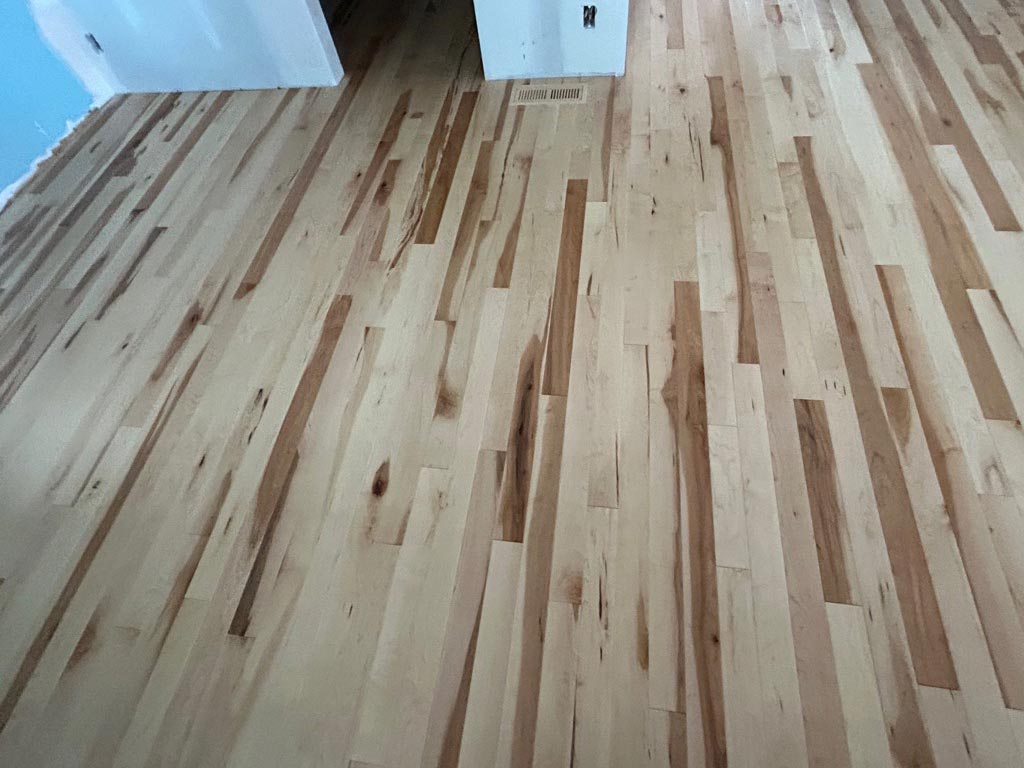
Benefits
Versatility: Hardwood floors can go just about anywhere. The engineered variety is best for areas with a concrete substrate and below-grade areas. Both types of hardwood come with a variety of lengths and widths as well as variations in graining, coloring, and patterning. Engineered hardwood provides more options in thickness.
Longevity: Hardwood floors are known to be very long-lasting. Some are known to last upwards of 50 or more than 100 years and with regular care, you can bet your floors will outlive most other items in your home. Solid hardwood floors last longer than engineered hardwood floors but both have a long life.
Revamp: Solid hardwood floors can be given new life when they are refinished. Important to note is that not all engineered hardwood floors have the ability to be refinished.
Return: Both hardwood flooring types are worth the investment as they increase the value of your home and you can count on them to last a long time.
General Pricing
Hardwood flooring varieties range in price from about $5.00 – $15.00 per square foot depending on species and grade. Consider the wood thickness and species when pricing out your options. Also, plan on adding on around $3-4 per square foot for installation. Comparably speaking, solid hardwood flooring is similar in cost to the engineered hardwood variety.
Finishes
Another way to distinguish hardwood flooring types is to consider the finishing type. Hardwood floors come finished in two ways: factory-finished flooring and site-finished flooring. Both have their pros and cons.
Factory finished: This type of hardwood flooring comes to you as a completely finished flooring product. These floors are finished in a factory and there’s no finishing work done on-site or in your home.
Benefits include the absence of chemical fumes in your home as well as a more immediate ability to walk upon your new floors. A drawback is you are limited to the manufacturer’s choices of grade, color, and finish. Factory-finished floors are also more expensive upfront.
Site finished: In this type of hardwood flooring, the sanding, staining, and finishing are done right on site (aka- your home). Some advantages of site-finished hardwood flooring include their ability to be better matched to existing floors. You can customize your color and finish, and you have sheen options too! A con is the time it takes for the finishing work to happen and the days you have to let it all set.
Get in touch with our team to discover your floor covering and installation options. We’re looking forward to working with you.
Installation Methods for Solid Hardwood Flooring
As with most flooring options, hardwood floors can be installed differently. Here are a few options:
Nail-down: Nails or cleats are used to secure the wood planks directly to the subfloor. This install method is often used over a plywood substrate. Both solid and engineered hardwood flooring options can be nailed down.
Glue-down: The wood planks are glued to the subfloor with a strong adhesive. You can do this with both hardwood types.
Floating: Instead of being attached to the subfloor, in this install method an adhesive or snap-together technique is used to keep the wood planks together. Once together, they are set to float above the subfloor. Often times a pad is placed between the subfloor and hardwood floors for moisture protection and sound reduction. Typically, only engineered hardwood flooring options are installed with way.
Subfloor Considerations
Important to consider for your installation method is the type of subfloor you are working with. Different subfloors have different needs when it comes to the type of hardwood flooring you are using as well as the installation method. Below are a few highlights to consider:
– Plywood subfloors that are solid and flat are suitable for a nail-down install of solid hardwood flooring as well as a floating install of engineered hardwood flooring.
– Particle board subfloors should only be used with an engineered hardwood flooring type installed with a floating method.
– Concrete subfloors are most suitable for engineered hardwood flooring installed with the glue down or floating install method. Solid wood flooring can also be glued down to a concrete subfloor.
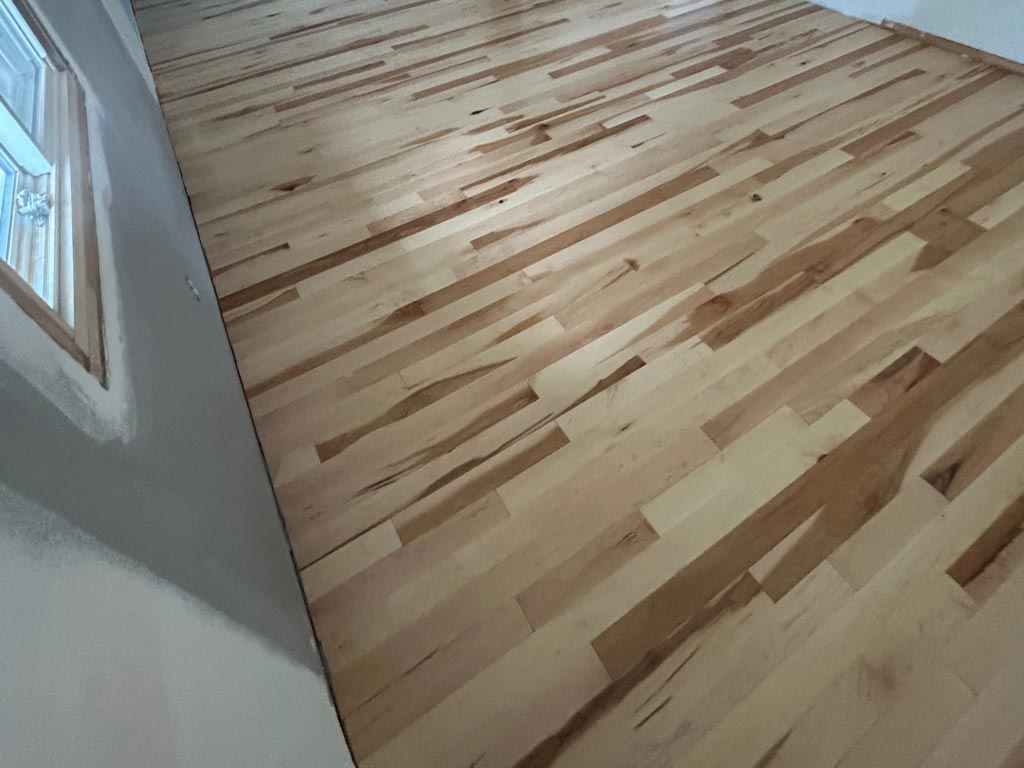
Design Trends
Hardwood flooring has been used for quite some time and because of that, it’s been given the deserved title as a timeless flooring solution. What’s fun about hardwood flooring is that you are able to create an up-to-date look with a classic product. Its top spot in flooring trends makes the investment in your hardwood flooring a wise one!
Below we break down what we’re seeing in different hardwood flooring trends!
Color Trends
Delicate & Bright Tones
In right now are soft and fresh color tones like a bleached oak. Light-colored wood floors are trending right now and they act as a neutral, yet statement-making part of your room design. Their neutrality makes them a great investment as you can continue to bring a different energy to your space without re-doing your floors – instead, focus on switching up your textile palette.
Muted Brown Tones
To establish a more traditional space, opt for mid-tone brown woods. Such woods offer a classic look that continues to be popular. Given its subtlety, it’s a look that you can count on for years and years to come.
Deep & Rich Tones
On the other end of the coloring spectrum is some deep, rich wood tones that are in style right now. Darker hardwood floor coloring that is espresso with notes of black is popping up in a lot of design spaces. Such floor coloring is fun to pair with bright walls and muted decor to establish contrast.
Get in touch with our team to discover your floor covering and installation options. We’re looking forward to working with you.
Plank Variations
We are seeing lots of people opt for wider planks to get that “bigger is better” feel in their space. Opposite of Scandinavian minimalism is the maximalist aura these wide planks offer. With the right finish, these wide planks can also set the tone for a rustic space.
Mixing and matching plank widths creates patterns and playful energy in space. Classic patterns like herringbone and chevron offer a traditional look while providing a point of interest in your room. Other creative patterning trendy right now includes geometric patterns with intricate inlays.
Maintenance and Care
If you choose to invest in the longevity and beauty of hardwood floors, it’s important to know how to best care for hardwood floors so as to maximize your investment. To do so, follow our tips below:
– Daily sweeping will ensure that you keep debris off the floor. Although dirt and other tiny particles seem harmless, you can think of such things like running sandpaper across your treasured floors! Keep that from happening with daily sweeping.
– Vacuum weekly to pick up particles that your broom might miss. Make sure your vacuum is set to the hard floor setting to avoid any accidental scratching from other settings. You do not want your brush roll or beater bar on!
– Although it might sound counterintuitive to mop your hardwood floors, it is something you should be doing with a microfiber mop. Do not use a dripping wet mop! Instead, opt for microfiber mops that use less liquid. It’s also worth mentioning that you should avoid steam mops.
– Use a simple stain marker and/or a wax stick to fix any minor scratches and dents – or choose not to & bring some character to your home!
– Utilize a no-shoe policy in the home.
Hardwood Flooring Revamp
The beauty of solid hardwood flooring is that you can refinish them to get a different look or to help maintain their appearance. Every few years, you can apply another coat of finish to the top of the floors to keep them looking fresh.
To bring your floor back to life, a recoat project generally involves three steps: deep clean, buff, and application of new coat.
If you want a more dramatic makeover, you can choose to add some more steps to that recoat process by adding a stain. Your process would then look like: deep clean, do any patch and repair work, sand, buff, clean again, apply stain, and finally, seal the floor.
Conclusion – What are Hardwood Floors
There you have it! Simply put, hardwood flooring is a wonderful flooring solution. Given its many aesthetic varieties and different installation options, you are bound to find a hardwood flooring option that suits your space.
The lifespan of hardwood floors as well as the ability to refinish your hardwood allows you to have these floors for the long term.
At Lakeside Floor Coverings, we are here to share all that we know about flooring so that we can help you get the results that you’ll love for years to come!
Hardwood Floor FAQ
What is the most durable hardwood floor?
Oak is the industry standard when it comes to hardwood flooring. With a Janka rating of approximately 1300, it is incredibly durable, available, and comes in various colors (including white and red).
What is the best type of hardwood flooring?
The best hardwood floors are made with wood species that are readily available and very hard. Oak flooring, maple flooring and cherry flooring are all good choices.
What is the life expectancy of hardwood floors?
Hardwood flooring can last a lifetime, but the glossy shine of original wood flooring will fade over the course of its life. You’ll notice fading after about 25 years. Hardwood floors, if installed properly, can last 100 years.
RELATED POSTS
Waterproof Flooring Misconceptions
Waterproof flooring has become a big hit for homeowners looking to keep water damage at bay. But is it really as waterproof as it sounds?
How to Make High Traffic Carpet Look New
How to Make High Traffic Carpet Look NewThere’s some good news that comes along with tips on how to keep your...
Tips and Tricks for Carpet Cleaning in High-Traffic Areas
Carpet Cleaning High Traffic AreasWhen it comes to cleaning practices for traffic-friendly carpets, you must...
What Carpet is Best for High Traffic Areas?
Best Carpet for High Traffic AreasToday’s carpeting products greatly overshadow the carpeting of the past!...
What is Commercial Luxury Vinyl?
What is Commercial Luxury Vinyl Commercial-grade luxury vinyl is a luxury vinyl flooring product that’s known...
Commercial Rubber Floors
Rubber flooring is known to be extremely durable. Because of its composition, rubber floors have increased water resistance and the ability to act as a sound barrier.
What is Marmoleum Flooring?
Marmoleum is a modern brand of classic linoleum flooring made by Forbo Flooring. It shares similar qualities to linoleum but what sets Marmoleum apart is its increased durability and enhanced styling options.
Commercial Floor Tile Types
Commercial tile is a common type of commercial flooring, especially in instances when function trumps style. Now, this is not to say that stylistic options do not exist with commercial tile because they certainly do!
Types of Commercial Flooring
Commercial Flooring Types Commercial flooring comes in many different types – what distinguishes it from...
What is Commercial Carpet?
What is commercial carpet? Commercial carpet is a special grade of carpeting that is made to withstand heavy traffic and is all the while easy to maintain.


